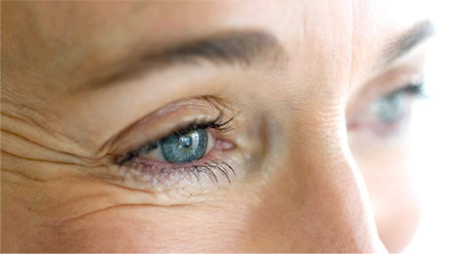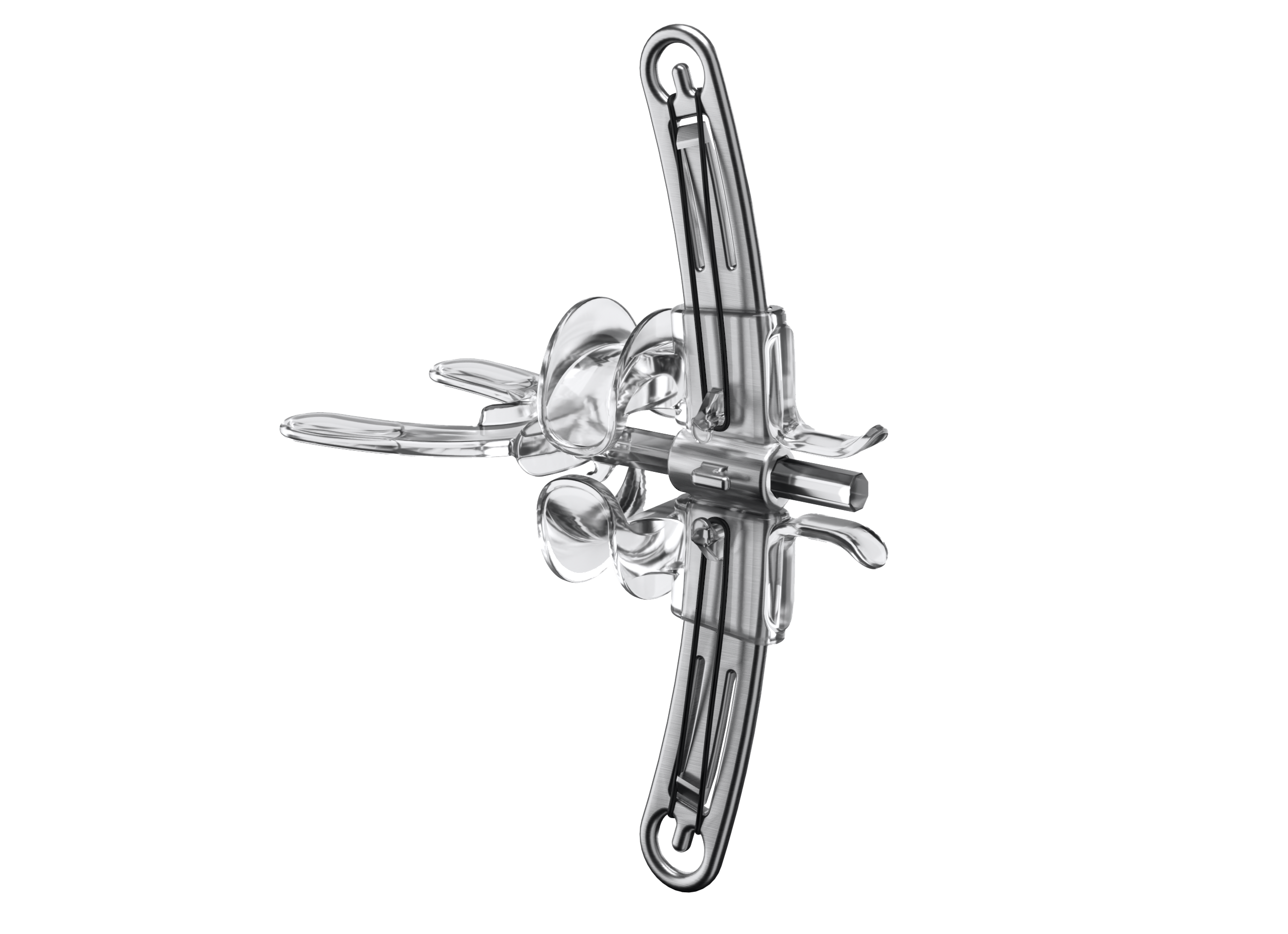Crows Feet Overview
Contact Us
Call Us
+1 (678) 632-3745
TESTMONIALS
ISO Metrik offers a game-changing, non-invasive solution to facial sagging — a safer, easier, and more affordable alternative to Botox and surgery. Its potential to support stroke patients with facial weakness makes it an exciting potential addition to modern stroke. rehabilitation.
Dr. Will Humphries
MAKE AN APPOINTMENT

Treating, Concealing, Exercising and Preventing Crow’s Feet

Crow’s Feet Overview
Crow’s feet is one of the characteristic signs of the aging face. Minor techniques designed to obliterate these lesions rapidly demonstrate their limits. The orbital fibers of the orbicularis oculi and the zygomatic muscles play a fundamental role in the pathogenesis of wrinkles.
As you age, you may notice fine lines forming in your skin on the outer corners of your eyes. These are lateral canthal lines, also known as crow’s feet or laugh lines. These small lines and wrinkles form from tiny muscles contracting in the outer corner of your eyes as you experience the many different emotions that influence your facial expressions: laughter, stress, grief and sadness. They usually start out as noticeable lines that form when you smile and your eyes naturally squint. Over time, these fine lines may start to appear on your face when you’re not smiling or even when you’re at rest.
Many other factors play a role in how your skin ages and the development of crow’s feet. Things like sun exposure, whether you use sunscreen, your diet and your genetics are all contributing factors.
Two proteins that help skin retain its plump, youthful appearance — collagen and elastin — naturally decrease as you age. As these proteins wane, you develop fine lines such as frown lines and crow’s feet. Using sunscreen and some facial moisturizers can help prevent crow’s feet from developing. But aging is an inevitable part of life.

Treating, Concealing, Exercising and Preventing Crow’s Feet

Crow’s Feet Symptoms
How do facial lines and wrinkles form ?
Facial lines and wrinkles (rhytides) form because of the following factors:
- Aging processes
- Sun damage
- Muscle movement
- Gravity
- Injury
- Surgery
- Acne
- Other skin diseases with a tendency to scar (e.g. discoid lupus)
- Smoking
There is often a degree of asymmetry to the lines, as people tend to smile or frown more on one side than the other, or consistently sleep on the right or the left cheek.
Fine linesFine lines and wrinkles arise because of irregular thickening of the dermis and because of a decrease in the amount of water held by the epidermis. This is mainly caused by sun damage and exposure to environmental toxins particularly tobacco smoke.
Furrows
Deeper lines or furrows are classified as dynamic or static. Dynamic lines appear with movement i.e. the activity of facial muscles. Static lines are unchanged with muscle movement. Eventually dynamic lines become static.
Crow’s feet around the eyes are due to smiling and activity of the eyelid muscles (orbicularis oculi).
Worry lines on the forehead are due to contraction of the frontalis muscle when raising the eyebrows
Frown lines between the eyebrows are due to contraction of corrugator supercilii muscles and procerus muscle when con centrating or angry
Sags and bags
Skin laxity or drooping is caused by several factors:
A reduction of the fat cells under the skin (subcutaneous tissue)
Loss of collagen and elastin fibres in the dermis reducing cutaneous strength and elasticity
Gravity, which allows the lax tissue to sag
The result is:
Brow ptosis (the forehead sags so the eyebrows drop over the eyelids, which then feel heavy)
Eyelid ptosis (the upper eyelid drops, sometimes obscuring the pupil)
Baggy upper and lower eyelids

Treating, Concealing, Exercising and Preventing Crow’s Feet

Crow’s Feet Causes
Hoping to avoid crow’s feet ? Sun damage is a primary cause of wrinkles. You can minimize the likelihood of developing wrinkles around your eyes by applying sunscreen (SPF 30+, broad spectrum sunscreen, but not too close to the eye) and wearing protective eyewear, such as wraparound sunglasses. To make an informed decision when selecting a sunscreen product, it is important to know that more thorough coverage is provided by broad spectrum formulations. These sunscreens offer not only UVB (ultraviolet B) protection, but they also include UVA (ultraviolet A) blocking agents – UVA rays cause most of the damage that leads to premature aging of the skin. Make sunscreen a part of your daily routine, re-apply sunscreen every two hours or more frequently if you are active in the water or perspiring a lot. The minerals contained in physical sunscreens, such as titanium dioxide or zinc oxide, work by forming a surface layer on the skin that will absorb, reflect and scatter the sun’s harmful UV rays before they can penetrate into the skin itself. Be generous with the amount of sunscreen that you apply (the recommendation is 2mg/cm2) – most people underestimate the necessary amount and therefore, do not receive the intended protective effect indicated by the SPF level listed on the packaging. Do not forget your wide-brimmed hat and sunglasses too!Some wrinkles are produced by repeated movement of the skin.
Intrinsic ageing
Intrinsic ageing of the skin is inevitable, and is genetically predetermined. It occurs because of accumulation of reactive oxygen species, biological aging of cells, and reduced cellular supply of nutrients and oxygen.
The rate of epidermal cell proliferation slows, affecting structure and function of the skin. The skin thins and flattens, with less resistance to shearing forces and injury.
Water content in the stratum corneum reduces, with less transepidermal water loss.
Hair thins and greys.
The numbers of melanocytes reduce.
Sebum production reduces.
The dermis has reduced vascularity.
There are fewer dermal mast cells and fibroblasts, and reduced glycosaminoglycans, hyaluronic acid and ground substance.
There is reduced collagen and elastin turnover, and increased glycation.
Volume of subcutaneous fat diminishes, especially on face hands and feet—whereas, it increases on thighs, waist and abdo men.
Ageing is immune suppressing, leading to increased risk of skin cancer.
Menopause in females
In women, loss of oestrogen levels at menopause contribute to premature aging, as compared with similarly aged men.
Photoaging
Photoaging is due to damage caused by solar radiation. Cell damage occurs because of the formation of reactive oxygen species.
High energy, short wavelength UVB damages DNA and other components of the epidermis.
Longer-wavelength UVA is 100 times more prevalent than UVB at the earth’s surface, but is of lower energy, so is less damag ing to DNA. UVA penetrates more deeply into the dermis, damaging elastic tissue, collagen, blood vessels and immune cells.
Infrared radiation penetrates to the deeper dermis and subcutaneous tissue, where it may also contribute to sun damage.

Treating, Concealing, Exercising and Preventing Crow’s Feet

Crow’s Feet Causes
Immune dysfunction
Immune dysfunction also affects skin ageing.
Examples include:
Immune deficiency diseases
Immunosuppressive agents
Chronic psychological stress
What are the clinical features of ageing skin ?
Intrinsic aging
Ageing skin is thin and inelastic, tearing easily.
It recovers more slowly from mechanical depression than younger skin.
Women have thinner skin then men.
Skin is dry, especially after frequent washing with soap and water.
Dry skin increases the risk of asteatotic eczema
The barrier function of the skin is less effective than when younger
Pigmentation is uneven due to melanocyte activation (melanosis) and inactivation (guttate hypomelanosis)
In those genetically predisposed, ageing skin develops:
Telangiectases and cherry angiomas
Seborrhoeic keratosesPhotoageing
Photoageing results in:
Fine lines and wrinkles
Discoloration
Textural changes
Thin skin that easily blisters, tears and grazes
Solar elastosis/heliosis
Solar lentigos and freckles
Solar comedones and colloid milia
Senile/solar purpura
Scarring, eg from sunburn
Actinic keratoses (tender dry spots)
Skin cancer (destructive growths)
Smoking
Compared to non-smokers of the same age, long-term smokers have:
More facial lines
Baggy eyelids and jawline
Yellowish sallow complexion
Open and closed comedones and cysts (Favre-Racouchot syndrome )
Greater risk of skin cancer

Treating, Concealing, Exercising and Preventing Crow’s Feet

Crow’s Feet Causes
Complications of ageing skin
Ageing skin is prone to keratinocytic skin cancer and some types of melanoma. The most common form of skin cancer is basal cell carcinoma. However, excessively photoaged skin is at increased risk of intraepidermal carcinoma, squamous cell carcinoma, lentiginous forms of melanoma, and rare forms of skin cancer such as merkel cell carcinoma.
How can the signs of ageing skin be prevented ?
Intrinsic ageing is inevitable. In perimenopausal women, systemic hormone replacement may delay skin thinning; the skin is less dry, with fewer wrinkles, and wound healing is faster than prior to treatment. Replacement is less effective at improving skin ageing in the postmenopausal decades. The effects of topical oestrogens, phyto-oestrogens and progestins are under investigation.
Protection from solar UV is essential at all ages.
Be aware of daily UV index levels, eg adhere to Sun Protection Alert advice.
Avoid outdoor activities during the middle of the day.
Wear sun-protective clothing: broad-brimmed hat, long sleeves and trousers/skirts.
Apply very high sun-protection factor, broad-spectrum sunscreens to exposed skin.
Do not smoke and where possible, avoid exposure to pollutants. Take plenty of exercise—active people appear younger than inactive people. Eat fruit and vegetables daily to provide natural antioxidants.
Many oral supplements with antioxidant and anti-inflammatory properties have been advocated to retard skin ageing and to improve skin health. They include carotenoids, polyphenols, chlorophyll, aloe vera, vitamins B, C and E, red ginseng, squalene, and omega-3 fatty acids. Their role is unclear.

Treating, Concealing, Exercising and Preventing Crow’s Feet


Treating, Concealing, Exercising and Preventing Crow’s Feet

Crow’s Feet Causes
How do facial lines and wrinkles form ?
Facial lines and wrinkles (rhytides) form because of the following factors:
Aging processes
Sun damage
Muscle movement
Gravity
Injury
Surgery
Acne
Other skin diseases with a tendency to scar (e.g. discoid lupus)
Smoking
There is often a degree of asymmetry to the lines, as people tend to smile or frown more on one side than the other, or consistently sleep on the right or the left cheek.
Fine linesFine lines and wrinkles arise because of irregular thickening of the dermis and because of a decrease in the amount of water held by the epidermis. This is mainly caused by sun damage and exposure to environmental toxins particularly tobacco smoke.
Furrows
Deeper lines or furrows are classified as dynamic or static. Dynamic lines appear with movement i.e. the activity of facial muscles. Static lines are unchanged with muscle movement. Eventually dynamic lines become static.
Crow’s feet around the eyes are due to smiling and activity of the eyelid muscles (orbicularis oculi).
Worry lines on the forehead are due to contraction of the frontalis muscle when raising the eyebrows
Frown lines between the eyebrows are due to contraction of corrugator supercilii muscles and procerus muscle when con centrating or angry
Sags and bags
Skin laxity or drooping is caused by several factors:
A reduction of the fat cells under the skin (subcutaneous tissue)
Loss of collagen and elastin fibres in the dermis reducing cutaneous strength and elasticity
Gravity, which allows the lax tissue to sag
The result is:
Brow ptosis (the forehead sags so the eyebrows drop over the eyelids, which then feel heavy)
Eyelid ptosis (the upper eyelid drops, sometimes obscuring the pupil)
Baggy upper and lower eyelids

Treating, Concealing, Exercising and Preventing Crow’s Feet

Crow’s Feet Causes
Treatment
The treatment you choose will depend on the severity of the crow’s feet and your desired outcome. In some cases, you may want to try a combination of treatments.
ISO Metrik Treatment for Crow’s Feet Caused by Bone Decay
Restoring Facial Structure & Smoother Skin Through Targeted Resistance Training
Crow’s feet—the fine lines and wrinkles around the eyes—are commonly associated with aging and repeated facial expressions. However, an overlooked cause of these wrinkles is bone resorption and muscle atrophy in the zygomatic region, also known as facial osteoporosis. As the zygomatic bone weakens and loses density, the surrounding skin and muscles lose structural support, leading to sagging and deepened wrinkles.
The ISO Metrik Device is designed to apply targeted resistance to the orbicularis oculi muscle and stimulate the zygomatic bone, promoting muscle strengthening and potentially influencing bone remodeling based on Wolff’s Law.
Understanding Bone Decay & Crow’s Feet Formation
Zygomatic Bone Resorption & Crow’s Feet:
✔ The zygomatic bone provides foundational support for the midface.
✔ As bone density decreases, the skin loses its underlying structure, contributing to the appearance of wrinkles.
✔ A weakened orbicularis oculi muscle may no longer provide sufficient tension to maintain smooth skin around the eyes.
Muscle Atrophy & Wrinkle Formation:
✔ The orbicularis oculi muscle can weaken over time due to a lack of resistance training.
✔ Without proper engagement, muscle tone decreases, potentially leading to sagging skin and fine lines around the eyes.
✔ Weakness in adjacent muscles like the zygomaticus major & minor may further exacerbate the loss of cheek support, intensifying crow’s feet.
How the ISO Metrik Device May Help Address Bone Decay & Wrinkles
The ISO Metrik Device is designed to provide controlled mechanical resistance to the facial muscles, which may help improve muscle tone and stimulate bone adaptation.
1. Engaging the Orbicularis Oculi Muscle for Wrinkle Reduction
✔ Strengthens the muscle fibers around the eye, which may help support the skin.
✔ Improves circulation, promoting oxygen and nutrient delivery to the skin.
✔ May contribute to a lifting effect by reinforcing muscle tone.
2. Applying Resistance to the Zygomatic Bone in Line with Wolff’s Law
✔ According to Wolff’s Law, bones adapt when subjected to mechanical stress.
✔ The ISO Metrik Device applies targeted resistance, which may help maintain the density and structure of the zygomatic bone.
✔ Stronger muscles around the bone may help improve overall midface support.
Optimized Positioning for Maximum Effectiveness
To enhance the effects of resistance training, the ISO Metrik Device can be rotated at different angles to apply focused engagement to specific areas.
45-Degree Rotation for Bone & Muscle Stimulation
🔹 Right Rotation (45° Right Tilt)
✔ Engages the orbicularis oculi & zygomaticus muscles, which may help lift the cheeks and smooth wrinkles.
✔ Applies mechanical stress to the zygomatic bone, potentially influencing bone remodeling.
🔹 Left Rotation (45° Left Tilt)
✔ Provides balanced muscle engagement for symmetrical facial toning.
✔ Supports cheek elevation, potentially reinforcing midface structure.
🔹 Lower Right Focus (Mandible & Jawline)
✔ Adds resistance to the lower face, which may help enhance overall facial symmetry.
✔ Complements upper facial toning, supporting a well-defined and lifted appearance.
Squeeze & Release Technique for Enhanced Facial Rejuvenation
By slowly squeezing and releasing the lip holders with the lips, users can increase muscle activation, which may:
✔ Help support firmer skin through improved muscle tone.
✔ Enhance circulation, which plays a role in maintaining skin elasticity.
✔ Provide a non-invasive approach to addressing signs of aging.
Why Consider the ISO Metrik Device for Crow’s Feet?
Unlike temporary topical treatments, the ISO Metrik Device:
✔ Engages the underlying muscles, which may help provide better support for the skin.
✔ Applies mechanical resistance to the zygomatic bone, potentially promoting bone adaptation.
✔ Offers a non-invasive, long-term option for addressing crow’s feet associated with muscle weakening and bone changes.
Revitalize Your Facial Structure & Support Skin Firmness Naturally
The ISO Metrik Device is designed for those looking to maintain facial structure, strengthen muscles, and support skin elasticity—without surgery or injectables.
Start your journey to a refreshed, youthful look today!
Topical creams
You can fight fine lines and wrinkles with both prescription and over-the-counter topical creams. Tretinoin (Retin-A) is widely used to fight the signs of aging because it stimulates the production of new skin. There are also many antiaging moisturizers that are similarly effective. They may help reduce the appearance of fine lines around the eyes, but will not improve deep crow’s feet. Results of topical creams are usually seen within 24 weeks.
Botulinum toxin (Botox)
Botox works to smooth out wrinkles caused by repetitive muscles contractions that happen when you make facial expressions. This treatment is very effective for crow’s feet.
Botox is best suited for people age 30–50 whose wrinkles are just starting to develop. It’s not effective on the deep wrinkles common among older adults.
Botox is injected directly into the affected area with a small needle, which causes the muscles to relax. Botox prevents the muscles from contracting, which can reduce the appearance of wrinkles or cause them to disappear entirely. Botox is particularly effective in people with dynamic wrinkles.Botox will not keep you from making facial expressions. It will only target those muscles around the eyes that are causing your crow’s feet. The effects typically last about 3 months.
Chemical peels
Chemical peels can improve the appearance of crow’s feet and promote younger, healthier looking skin. This is accomplished by putting a chemical solution on the face that removes the outer layer of old skin, leaving behind new, smoother skin.There are three different types of chemical peels:
superficial peels
medium-depth peels
deep peels
Superficial peels can be done with a certified esthetician, but deeper peels should be done in your healthcare provider’s office. The effects of the peel and the recovery time involved will depend on the type of peel you get.
Superficial peels are relatively painless and require little or no down time. Deeper peels can be very painful, and may even require anesthesia. For best results, superficial peels should be repeated every 2–4 weeks and medium-depth peels every 6–12 months until the desired results are achieved.
TESTMONIALS
Dimply dummy text of the deaprinting and typesetting industryorem Ipsum has been the industry’s standard dummy dearty.
DAVID SMITH
CEO,Radiustheme
Contact Us
Call Us
+1 (678) 632-3745
MAKE AN APPOINTMENT
Your journey to facial rejuvenation begins here. Join the ISO Metrik Device Community today.


